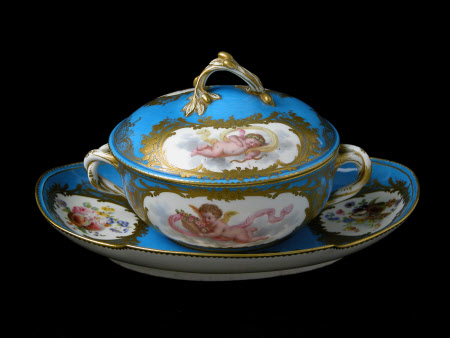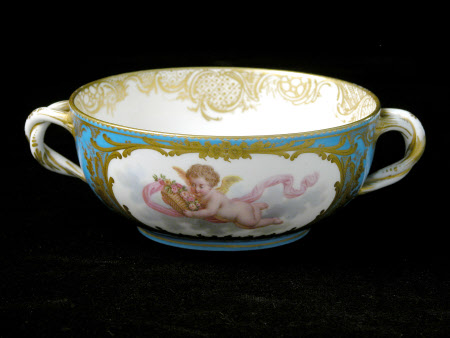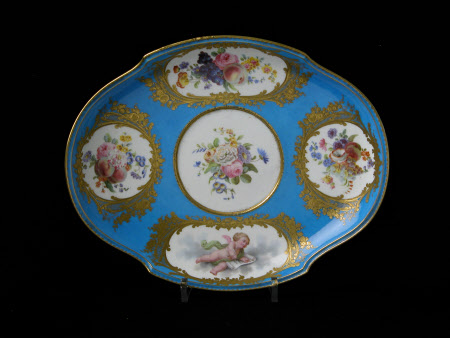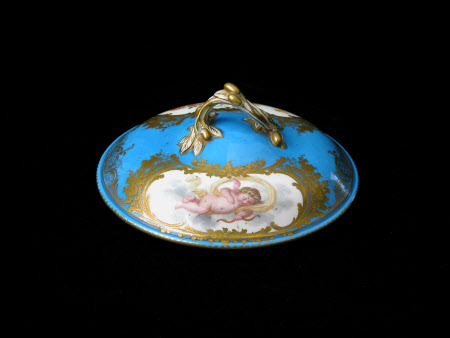Bowl and cover
Sèvres Porcelain Manufactory
Category
Ceramics
Date
1752 - 1850
Materials
soft paste porcelain
Place of origin
Vincennes
Order this imageCollection
Saltram, Devon
NT 870775
Summary
Covered bowl and platter, soft-paste porcelain, painted and gilded. Made by the Vincennes porcelain factory, France, and probably later decorated in England, 1752-1850.
Full description
This type of covered bowl with a platter is designed for eating soup or broth in a bedroom or boudoir. In 18th-century France, wealthy people took their time to get dressed, particularly for important events, in a process known as the 'toilette'. This ritual involved clothing, makeup, perfume and hair styling, centred around a large dressing table with more porcelain accessories. As a 'toilette' could take hours, soup or broth was drunk for much needed energy. Once the cover is lifted, the two handles allow the user to drink straight from the bowl without need of a spoon. The platter provides space for bread which could be dipped in the hot liquid. The base of the platter has an underglaze blue mark associated with the Vincennes factory, France, which was established in 1740, and moved to Sèvres in 1756. The French factory names for these shapes are 'écuelle ronde tournée' and 'plateau ovale', and they were produced with many types of decoration to suit different tastes. The gold interlaced 'L' mark on the base of the bowl and the style of some of the painted details, combined with surface pitting (often a sign of re-firing), suggests that this object may have been redecorated in the 19th century when such items were popular with wealthy English collectors. Adding further decoration could increase the appeal of an otherwise plain item. This example is decorated with cherubs and flowers on a turquoise blue ground colour, called 'bleu céleste, which is common for 19th-century redecorated pieces, and not a combination used on dinner wares in the 18th century. This bowl, cover and platter belonged to Harriet Sophia Parker (1809-97) who grew up at Whiteway near Chudleigh, Devon. In 1842, she married Edmund Henry Parker, 2nd Earl of Morley, and on her death in 1897, many of the contents of Whiteway came to Saltram. It is unlikely that Harriet ever used this item as it was originally intended, by the time int was at Whitway and Saltram it had become a display piece, positioned alongside porcelain figures and vases.
Provenance
In the collection of Harriet Sophia Parker, Countess Morley (1809-97), at Whiteway House, on an inventory after her death in 1897 and tranferred to Saltram House around that time; given to NT by Montagu Brownlow Parker (1878-1962), 5th Earl of Morley as part of the Endowment in 1957.
Makers and roles
Sèvres Porcelain Manufactory , porcelain manufacturer



